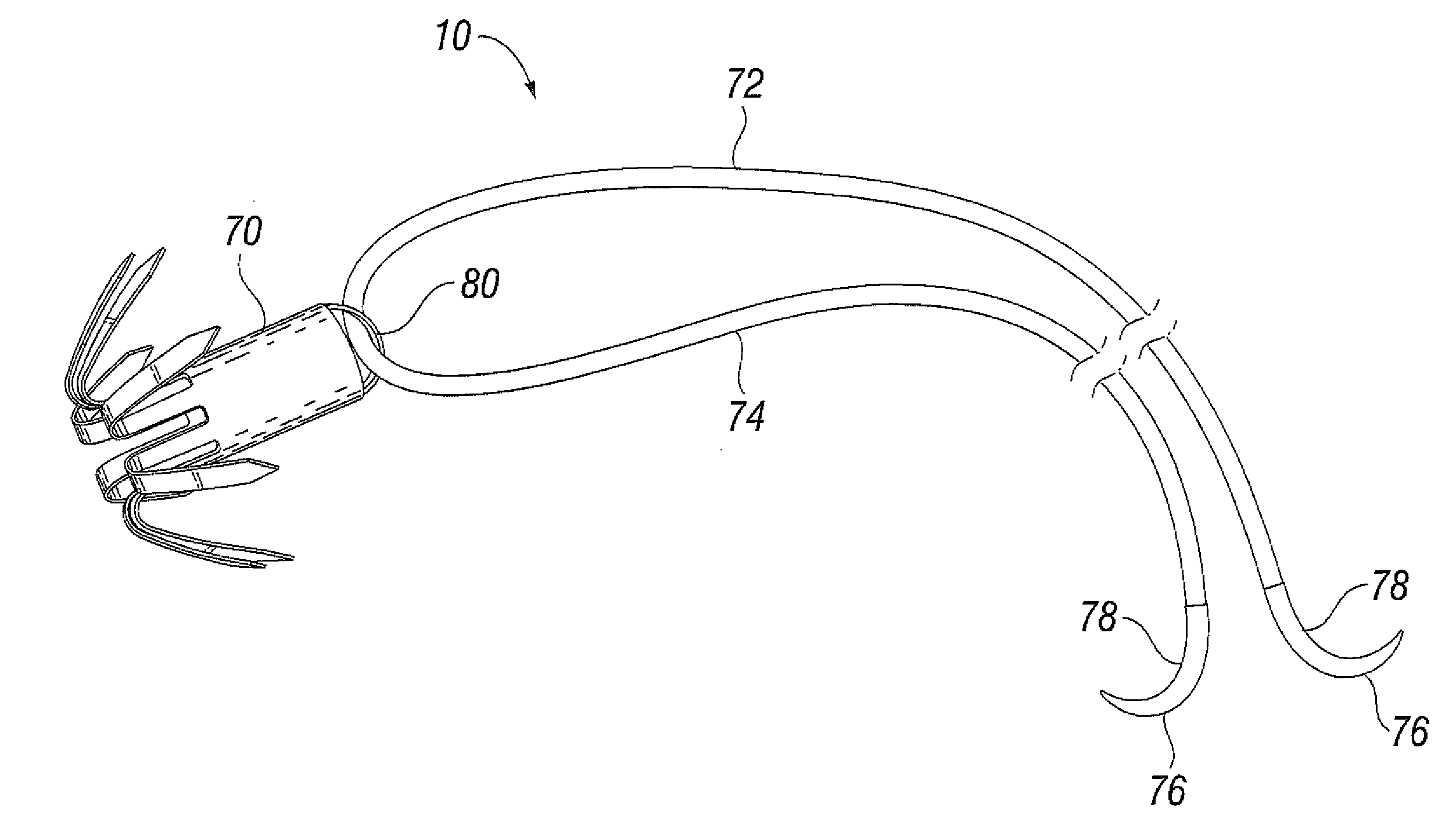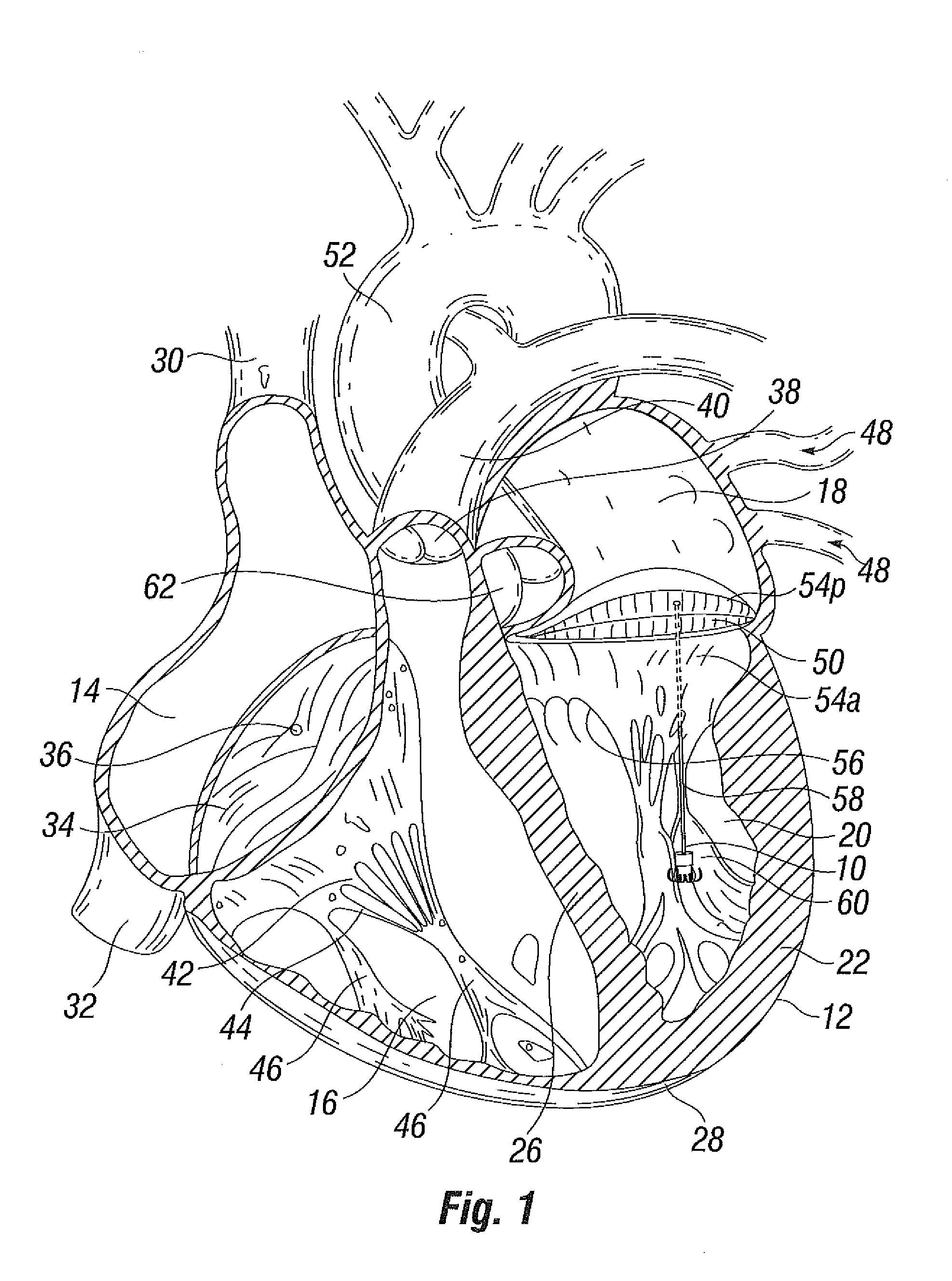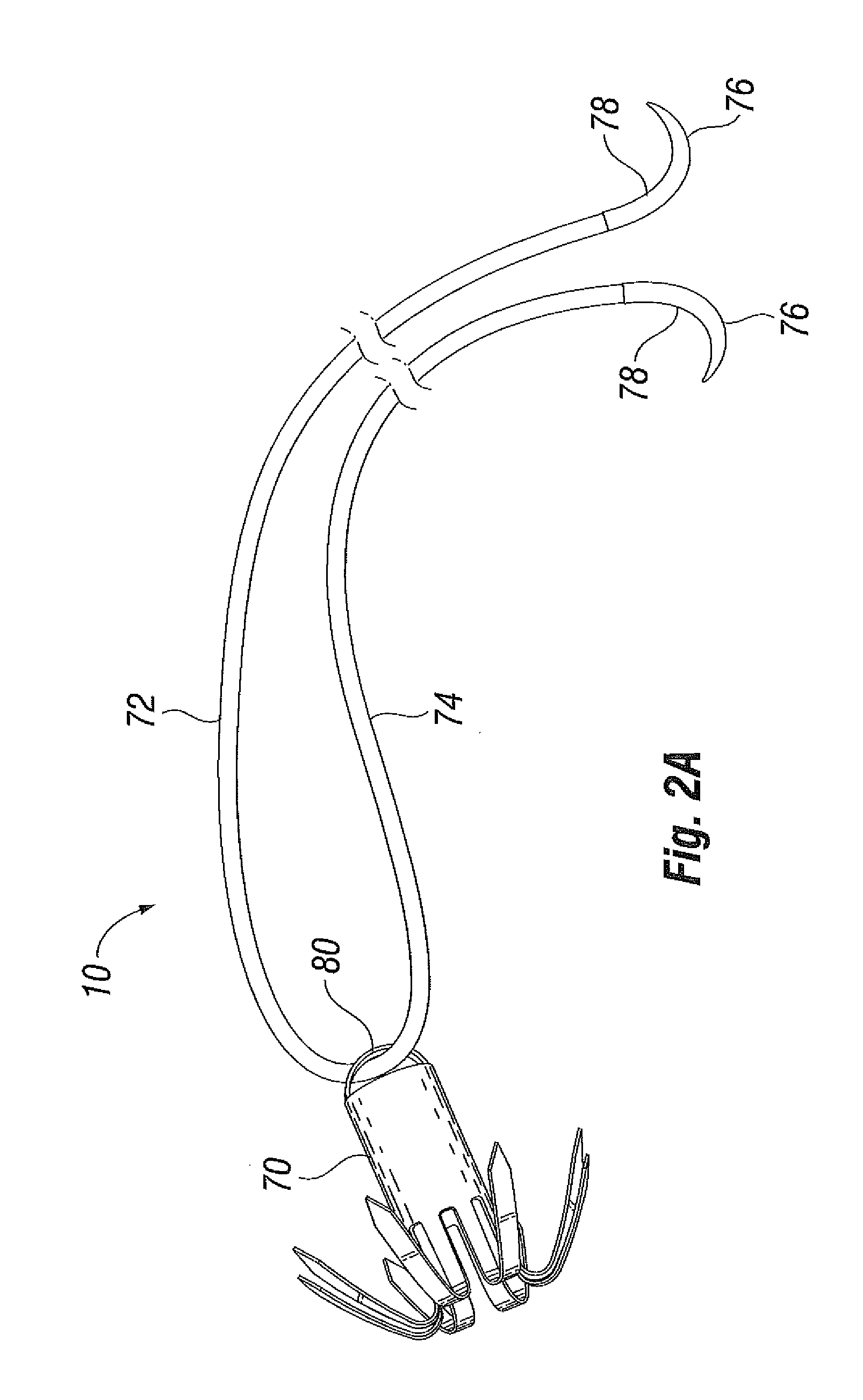Suture and method for repairing a heart
a technology of artificial and mechanical components and heart, applied in the field of implantable medical devices for treating diseases, disorders, and malformations of the heart, can solve the problems of prolapse of leaflets, heart valves may lose their ability to close properly, and heart function may be seriously impaired
- Summary
- Abstract
- Description
- Claims
- Application Information
AI Technical Summary
Benefits of technology
Problems solved by technology
Method used
Image
Examples
Embodiment Construction
[0045]With reference to FIG. 1, a device 10 according to the invention is depicted deployed within a heart 12. The heart 12 has four chambers, known as the right atrium 14, right ventricle 16, left atrium 18, and left ventricle 20. In the particular embodiment depicted, the device 10 is deployed in the left ventricle 20. The heart 12 has a muscular outer wall 22, with an interatrial septum 24 (not visible in FIG. 1) dividing the right atrium 14 and left atrium 18, and a muscular interventricular septum 26 dividing the right ventricle 16 and left ventricle 20. At the base of the heart 12 is the apex 28.
[0046]Blood flows through the superior vena cava 30 and the inferior vena cava 32 into the right atrium 14 of the heart 12. The tricuspid valve 34, which has three leaflets 36, controls blood flow between the right atrium 14 and the right ventricle 16. The tricuspid valve 34 is closed when blood is pumped out from the right ventricle 16 to the lungs. Thereafter, the tricuspid valve 34 ...
PUM
| Property | Measurement | Unit |
|---|---|---|
| flexible | aaaaa | aaaaa |
| tension | aaaaa | aaaaa |
| volume | aaaaa | aaaaa |
Abstract
Description
Claims
Application Information
 Login to View More
Login to View More - R&D
- Intellectual Property
- Life Sciences
- Materials
- Tech Scout
- Unparalleled Data Quality
- Higher Quality Content
- 60% Fewer Hallucinations
Browse by: Latest US Patents, China's latest patents, Technical Efficacy Thesaurus, Application Domain, Technology Topic, Popular Technical Reports.
© 2025 PatSnap. All rights reserved.Legal|Privacy policy|Modern Slavery Act Transparency Statement|Sitemap|About US| Contact US: help@patsnap.com



